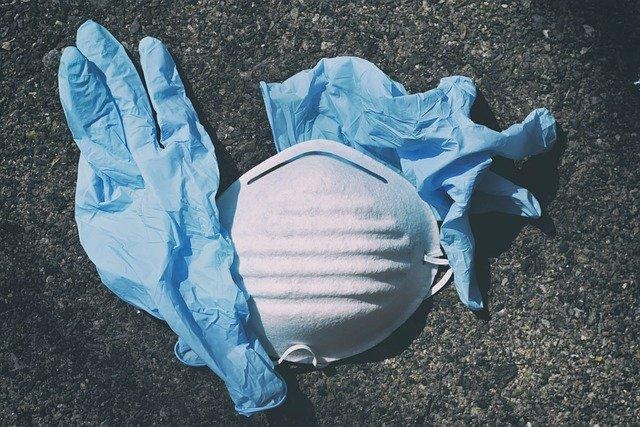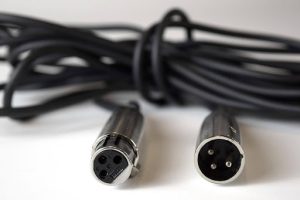The Role of Technology in Fighting COVID-19

The first case of coronavirus, which is now called COVID-19, was registered in December 2019. In less than 4 months, the illness has affected over 2 million people across 177 countries. According to the chief of the United Nations, this is the biggest crisis since World War II.
While healthcare professionals all around the globe are working relentlessly to treat the people infected with coronavirus, several technology companies have come forward to offer their support in the fight against COVID-19 pandemic.
According to the website of the World Health Organisation, the pandemic has triggered a massive demand for digital health technology solutions. Thankfully, there have been some successful solutions such as population screening, infection tracking, designing targeted responses, and prioritising the usage and allocation of resources.
In addition, WHO Director-General, Dr. Tedros Adhanom Ghebreyesus addressed the support offered by the tech companies and said that WHO needed their commitment in order to turn the ideas into reality. He also added that it is possible to tackle this global threat and get the economy back on track by working together.
By far, technology has contributed largely in the fight against coronavirus outbreak. Here are some notable examples:
- Positioning technologies:
Positioning technologies are playing an important role in helping the government agencies and first responders on the ground to accurately assess the situation, locate the riskiest areas and conduct the relief and rehabilitation efforts as per the need. Even the logistic companies are using the Global Navigation Satellite System (GNSS) terminals to help supply essential relief goods faster.
According to a report, Israel has allowed its internal security agency to access the location data of its citizens for 30 days. Asian countries like South Korea, China and Taiwan are also using positioning technologies to restrict the transmission of the virus.
Europe, on the other hand, has stricter laws on data protection. However, Italy and Germany are using location data anonymously to pinpoint public spaces where people are defying lockdowns and gathering in groups.
- Robotics:
Wuhan (China), which was the first epicentre of the outbreak, had the best example of robotics in stopping the spread of the virus. One of the hospitals in Wuhan replaced their staff entirely with robots. Not just that, China has also used robots for preparing meals at the hospital, waiting for the tables at restaurants, spraying disinfectants, vending rice and dispensing hand sanitisers.
In some of the hospitals in China, robots are also performing diagnosis and conducting thermal imaging. Multicopter, a Shenzen-based company, is even using robots to transport medical samples. Wuchang Hospital, in collaboration with China Mobile and Cloud Minds, is working towards making the hospital facility completely smart and digital.
To fight coronavirus, experts are building humanoid called Cloud Ginger (a.k.a XR-1). There’s also Smart Transportation Robot that is being built. It can carry food and medicines provided by the healthcare providers to the patients without any person-to-person contact.
- Drones:
Drones are really effective in the fight against corona. They are currently being used in several countries for transporting medical equipment and patient sample in those areas where humans are more likely to catch the virus. While these pieces of modern technology are preventing the contamination of medical samples, they are also accelerating the speed of delivery.
Various types of drones are being used for different purposes in the time of the pandemic. There are drones with QR code placards that could be scanned to register health information. Some drones are powered with facial recognition, and they are used to broadcast a warning to the citizens to stay indoors. Agricultural drones are being used to spray disinfectants in the countryside.
China and Spain have used drones to monitor citizens during the lockdown. South Korea, on the other hand, has used drones to help disinfect the epidemic hotspot in the country – Daegu.
- Big data and facial recognition:
The use of Big Data in the fight against COVID-19 is more effective in Asian countries than the European nations. The reason is, again, the stricter data protection laws in Europe. With access to public information, several organisations are building dashboards using Big Data. Also, face recognition and infrared temperature detection are installed in big cities to monitor.
According to a report by Al Jazeera, telecom company China Mobile informed to state media agencies about the people who have been infected. There are also smartphone apps in place that keep a tab on people’s movement and determine whether they have been in contact with an infected person or not.
China-based AI companies like Hanwang Technology and SenseTime have claimed that they have developed a special facial recognition technology that can perfectly recognise a person even if he/she is wearing a mask.
- Artificial intelligence:
Novel coronavirus or COVID-19 was an unknown virus when the first case was registered. However, medical professionals are now able to understand a lot more about such diseases with the help of data analytics and predictive models. Chinese Internet company, Baidu has created its Lineartfold algorithm available to teams that are working on the COVID-19 studies. The algorithm has been a great help in predicting the structure of a virus.
Alibaba, the Chinese e-commerce giant, has built a cloud-based coronavirus diagnosis tool. The company claims that it is more than 96% accurate and takes less than 20 seconds to work. It uses AI to detect the traces of the virus in an individual.
Baidu has also created tools to effectively screen large populations. They believe an AI-powered infrared system can detect a change in temperature in a person’s body. Apparently, the system can test up to 200 people in one minute with causing any disruption. This is why it was used in Beijing’s Qinghe railway station to identify potentially infected people among the passengers.
- Mobile apps:
A startup in the UK has launched an app that helps people self-report their symptoms. This C-19 COVID Symptom Tracker allows the user to identify high-risk areas and lots of other things. South Korea has developed an app called Corona 100m. It alerts the users if they come within 100 meters of a person with coronavirus infection.
India is also preparing to launch an app that can tell users if they came in contact with someone who later tested positive for the virus. This app will be working with location data obtained from the smartphone of the infected person. It will also utilise short-distance BlueTooth signals between smartphones.
Chinese companies, Alibaba and Tencent, give people a colour code on the basis of their health condition and travel history. This code is decided by a big-data-driven algorithm. It decides if a person should enter a public place like a mall or a subway station, or can travel to another city.
In an attempt to fight the pandemic, more CCTVs are being installed in big cities where the outbreak has made a major impact. As you may realise, the countries with access to advanced technologies are making a lot of progress in stopping the spread of the virus. It is quite evident that technology has now become our first line of defence against the COVID-19 pandemic.
Author bio: Suhana is a passionate blogger and digital marketing enthusiast. Suhana Williams is one of the most talented assignment experts who also provide assignment help through Assignmenthelp.us. She enjoys the ever-evolving world of digital marketing and loves to share her opinion on every possible update with her audience. When not creating magic with her words, you can find her sky-diving or trekking in the most bizarre locations.
Table of Contents







